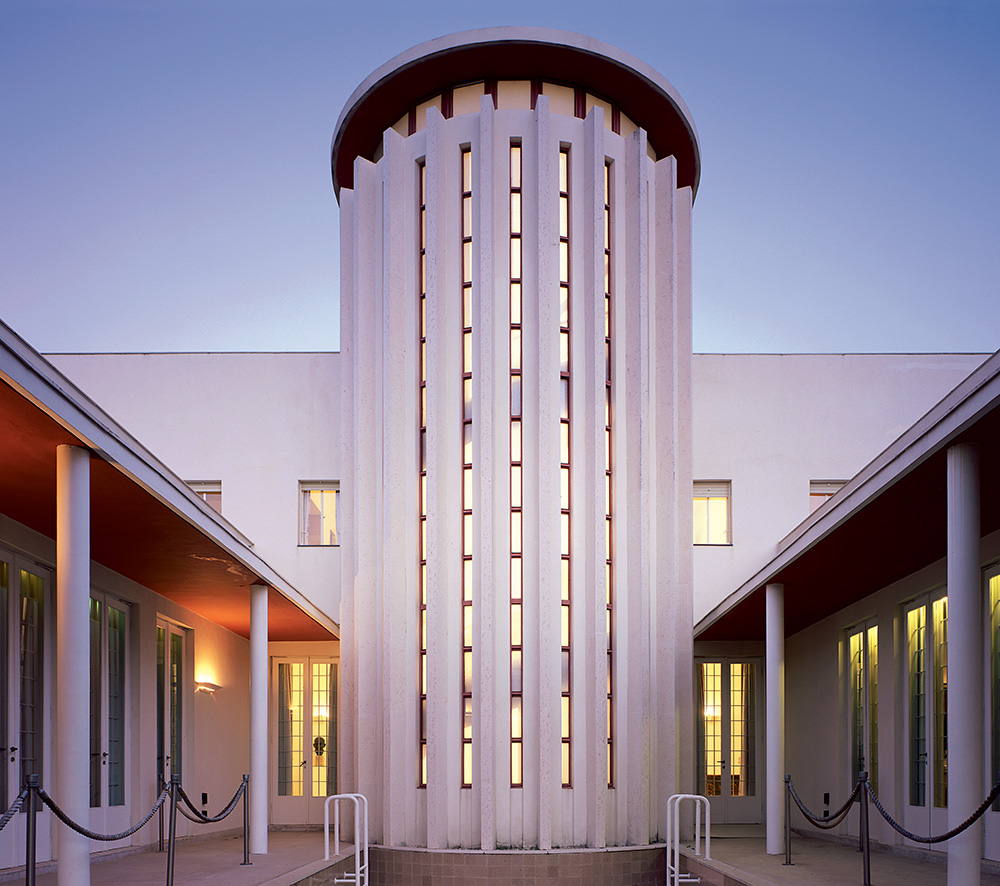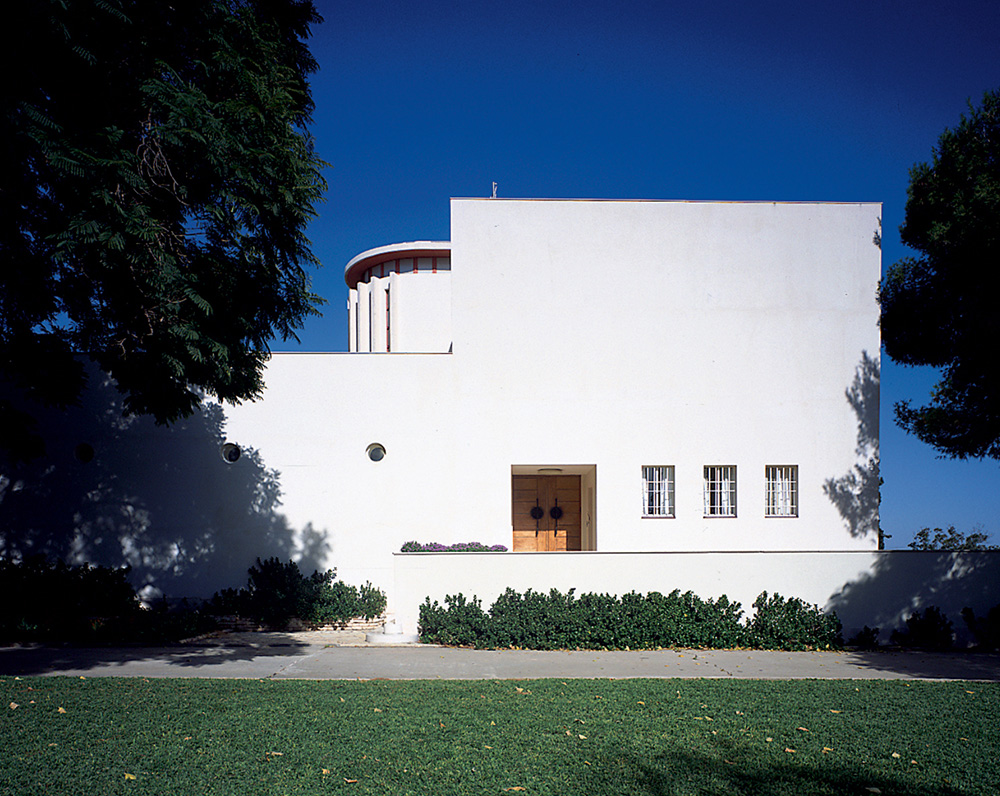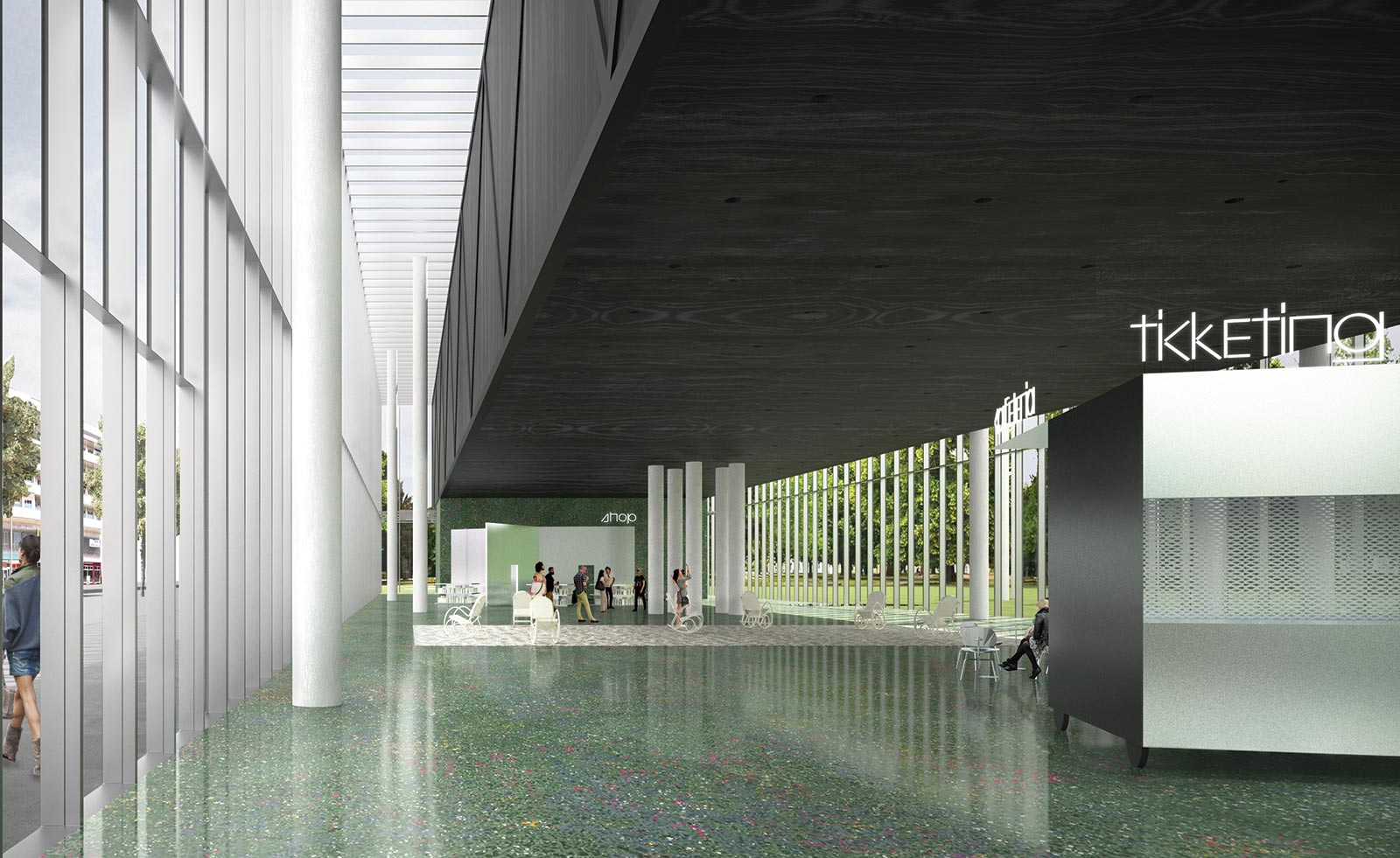Erich Mendelsohn’s Villa Weizmann is one of the German émigré’s modernist masterpieces

Among the farmers, labourers, religious zealots and political refugees who washed up on the shores of British-controlled Palestine during the inter-war period was German architect Erich Mendelsohn. Fleeing the rise of Nazism, Mendelsohn landed in the Levant in 1934, leaving behind a decade’s worth of prominent commissions in both Germany and Britain.
In Palestine, then a country in the making, Mendelsohn found an unblemished canvas on which he could inscribe an evolving aesthetic as much informed by his sophisticated past as by his idealistic visions for the nation’s future. Emboldened by the potential of this desert utopia and lauded by its nascent intellectual class, the modernist Mendelsohn unabashedly enthroned himself as Palestine’s chief architect. ‘Palestine of today symbolises a union between the most modern civilisation and a most antique culture,’ he wrote. ‘It is the place where intellect, vision, matter and spirit meet.’

A circular tower punctured by vertical glass panels tops off the spiral staircase
Although his stay in Palestine was relatively brief, in seven years Mendelsohn completed a series of buildings that formed many of the principles of early Israeli architecture. His Hebrew University medical complex remains a key Jerusalem landmark. The nearby Anglo-Palestine Bank (now Bank Leumi) still looms large over the capital’s central pedestrian area. And his private home for retail magnate Salman Schocken serves to this day as a study in European formality balanced by the climatic demands of its arid, mountainous perch.
While these commissions were noteworthy for their elegance and size, it is Mendelsohn’s Villa Weizmann – the residence of Israel’s first president, Chaim Weizmann – that stands as his most crucial contribution to the nation’s architectural treasury. The 22-room building is set amid orange groves on an 11-acre estate in Rehovot, south of Tel Aviv. The estate is now the home of the Weizmann Institute of Science, but was merely an agricultural settlement at the time of construction, from 1934 to 1936.

Ambitious gardens filled with native plants and trees surround the villa.
Although modest in ambition, the house in many ways represents the purest example of Mendelsohn’s West-meets-East style, thanks to its dramatic, spiral staircase – a seminal Mendelsohn signature element back in Europe. The staircase rises from the ground floor and is capped three stories later by a squat, circular tower. Enclosed in a concrete wall sliced with vertical glass panels, the stairway both centres the house’s façade and anchors an abstract, Arabian inner courtyard, where a rectangular reflecting pool is balanced by a library on one side and a drawing room on the other.
This riad-like nod to the region’s traditional vernacular is the exception rather than the rule at Villa Weizmann. Instead, the building is evocative of the Bauhaus-on-the-beach aesthetic developing in urban Palestine at the time, only with fancier flourishes. With the house lacking air-conditioning, these decorative details are as much about function as form. They are best expressed in the numerous windows, which allow air to circulate continually.
RELATED STORY

On the ground floor, porthole windows line many of the rooms at ceiling level, while large glass doors lead from the library and drawing room straight to the pool. Even the glass panels that encircle the staircase can be opened to the elements. Marble floors throughout the building, an imported extravagance during an era of austerity, are yet another defence against the humidity and heat.
Although harsh on the house, the extreme heat and humidity of Rehovot provided Mendelsohn with the opportunity to exercise his green fingers in ways not possible back in temperature Europe or in the drier, more desert-like Jerusalem hills. Visible from nearly every corner of the house, the gardens are nothing if not ambitious, flowing down and around the site in sharp contrast to the building’s rectilinear rigidity. There are semicircular terraces laden with shrubs, as well as olive and fig trees. Meanwhile, cypress, magnolia, oleander and jacaranda place the gardens within Palestine’s native vernacular in a way Mendelsohn felt unable to express up at the house.

Mendelsohn’s signature spiral staircase adds drama to the interior.
Now almost 70 years old and surrounded by the sophisticated laboratories of the Weizmann Institute, Villa Weizmann still retains its air of architectural and historical authority, living on as a national museum. In 2001, a meticulous renovation of the house was carried out by architect Hillel Schoken, the grandson of Mendelsohn’s primary patron back in Berlin, Salman Schocken.
Now a professor of architecture at Tel Aviv University, the younger Schocken installed air-conditioning and new ceramic kitchen tiles, retouched the house’s numerous windows and replastered its façade. Schocken also designed a new glass, steel and stone pavilion on the property in order to house Weizmann’s prized, custom-made 1952 Lincoln Cosmopolitan limousine, one of only three manufactured. Schocken’s aim with the renovation was to pick up where Mendelsohn left off: ‘If Mendelsohn entered the house today, he would see it as something he had designed.’
Sadly, Villa Weizmann did not mark the start of an era of Mendelsohnian modernism in Palestine and the architect never achieved his dream of becoming the new state’s design mastermind. Chastened by economic realities and propelled by ambition, he decamped for the United States in 1941, leaving behind an often overlooked oeuvre of Mediterranean marvels. ‘Mendelsohn was always an outsider, never exactly accepted by the Bauhaus,’ says Schocken. ‘But his time in Israel and buildings such as Villa Weizmann demonstrate his ability to understand the new and admirably adapt to his environment.’ §
As originally featured in the May 2004 issue of Wallpaper* (W*68)
Wallpaper* Newsletter
Receive our daily digest of inspiration, escapism and design stories from around the world direct to your inbox.
-
 Sotheby’s is auctioning a rare Frank Lloyd Wright lamp – and it could fetch $5 million
Sotheby’s is auctioning a rare Frank Lloyd Wright lamp – and it could fetch $5 millionThe architect's ‘Double-Pedestal’ lamp, which was designed for the Dana House in 1903, is hitting the auction block 13 May at Sotheby's.
By Anna Solomon
-
 Naoto Fukasawa sparks children’s imaginations with play sculptures
Naoto Fukasawa sparks children’s imaginations with play sculpturesThe Japanese designer creates an intuitive series of bold play sculptures, designed to spark children’s desire to play without thinking
By Danielle Demetriou
-
 Japan in Milan! See the highlights of Japanese design at Milan Design Week 2025
Japan in Milan! See the highlights of Japanese design at Milan Design Week 2025At Milan Design Week 2025 Japanese craftsmanship was a front runner with an array of projects in the spotlight. Here are some of our highlights
By Danielle Demetriou
-
 Croismare school, Jean Prouvé’s largest demountable structure, could be yours
Croismare school, Jean Prouvé’s largest demountable structure, could be yoursJean Prouvé’s 1948 Croismare school, the largest demountable structure ever built by the self-taught architect, is up for sale
By Amy Serafin
-
 Jump on our tour of modernist architecture in Tashkent, Uzbekistan
Jump on our tour of modernist architecture in Tashkent, UzbekistanThe legacy of modernist architecture in Uzbekistan and its capital, Tashkent, is explored through research, a new publication, and the country's upcoming pavilion at the Venice Architecture Biennale 2025; here, we take a tour of its riches
By Will Jennings
-
 At the Institute of Indology, a humble new addition makes all the difference
At the Institute of Indology, a humble new addition makes all the differenceContinuing the late Balkrishna V Doshi’s legacy, Sangath studio design a new take on the toilet in Gujarat
By Ellie Stathaki
-
 How Le Corbusier defined modernism
How Le Corbusier defined modernismLe Corbusier was not only one of 20th-century architecture's leading figures but also a defining father of modernism, as well as a polarising figure; here, we explore the life and work of an architect who was influential far beyond his field and time
By Ellie Stathaki
-
 How to protect our modernist legacy
How to protect our modernist legacyWe explore the legacy of modernism as a series of midcentury gems thrive, keeping the vision alive and adapting to the future
By Ellie Stathaki
-
 A 1960s North London townhouse deftly makes the transition to the 21st Century
A 1960s North London townhouse deftly makes the transition to the 21st CenturyThanks to a sensitive redesign by Studio Hagen Hall, this midcentury gem in Hampstead is now a sustainable powerhouse.
By Ellie Stathaki
-
 The new MASP expansion in São Paulo goes tall
The new MASP expansion in São Paulo goes tallMuseu de Arte de São Paulo Assis Chateaubriand (MASP) expands with a project named after Pietro Maria Bardi (the institution's first director), designed by Metro Architects
By Daniel Scheffler
-
 Marta Pan and André Wogenscky's legacy is alive through their modernist home in France
Marta Pan and André Wogenscky's legacy is alive through their modernist home in FranceFondation Marta Pan – André Wogenscky: how a creative couple’s sculptural masterpiece in France keeps its authors’ legacy alive
By Adam Štěch